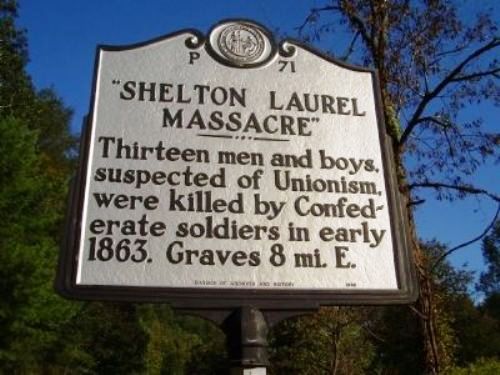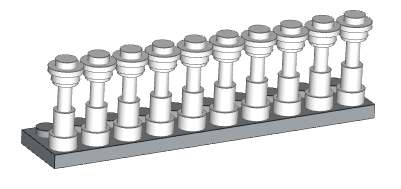
The ongoing standoff at the Malheur National Wildlife Refuge in Oregon reminds me of other breakdowns in law and order. With the fundamental question of private property vs. the federal government, it’s not quite as dramatic as the American Civil War, but it’s a dramatic standoff nonetheless.
But the Civil War seems to lurk everywhere I look. The photo above showed up on my Flickr home page today and sent me off to learn about the Shelton Laurel Massacre, in which a Confederate Colonel, Lawrence Allen, from my dad’s home town of Marshall, North Carolina and his lieutenant colonel James A. Keith went hunting for Unionist sympathizers in Shelton Laurel Valley. After torturing local women, including the 85 year old Mrs. Unus Riddle, and burning houses and slaughtering livestock, they rounded up fifteen suspected sympathizers, all related and most with the last name Shelton, and began to march them toward East Tennessee where the Confederate army lay. Along the way two escaped, so Keith ordered the remaining thirteen captives shot, including three boys aged 13, 14 and 17. Keith evaded the law after the war but eventually was tried for the massacre after the war in civilian court, and would have been vindicated by the state superior court had he not escaped two days before the verdict was returned; he was never recaptured.
Learning about the massacre hits home. My great-great-grandfather was a Confederate army deserter who only wanted to plow his fields; it’s likely, had he been in Shelton Laurel rather than in the caves in the hills above Marshall, that he would have been rounded up by Keith’s soldiers as well.
Some more resources on the massacres: a letter by Col. William R. Shelton giving an oral history perspective on the incident; a 2013 blog post in the New York Times providing some historical and legal perspective on the issue; an essay discussing some of the deep divisions in the mountains; an essay by a novelist and a descendant of a possible participant in the massacre; and a recent article discussing other accounts that cast doubt on Keith’s responsibility for the massacre and suggesting that he may have been framed by Augustus Merrimon, who wrote the report on the massacre for Governor Zebulon Vance.






